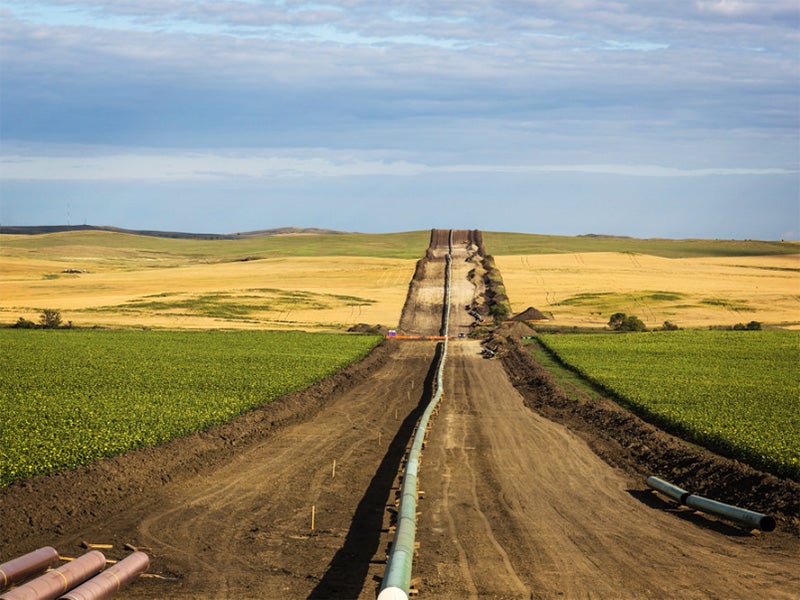Pipeline Expert: Government Underestimated Risk of an Oil Spill from Dakota Access Pipeline
Standing Rock Sioux Tribe demands government reconsider its finding that pipeline poses no risks
Contact
An independent expert hired by the Standing Rock Sioux Tribe has found that the government’s environmental assessment of the pipeline’s environmental impact was inadequate.
With this new information, Standing Rock Sioux Tribe chairman Dave Archambault II has asked the U.S. Army Corps of Engineers to reassess its conclusion that the pipeline crossing will not affect tribal members.
“This underscores one of the fundamental deficiencies of the Final Environmental Assessment—it assumes, without foundation, that placing a massive oil pipeline just upstream from the Reservation presents no risk to the Tribe,” Archambault wrote in his letter to Assistant Secretary Jo-Ellen Darcy.
An oil spill at Standing Rock would also impact an estimated 17 million people located down stream from the river.
Richard Kuprewicz of Accufacts, Inc., a consulting firm that advises government agencies and industry about pipelines, analyzed the government’s Environmental Assessment. The firm found that the U.S. Army Corps of Engineers failed to address pipeline safety and the risk the pipeline poses to the waters of Lake Oahe and the Standing Rock Sioux Tribe, which draws its drinking water from that lake.
The environmental assessment significantly underestimated the risk of an oil spill into sensitive areas was the main conclusion of the report. Additionally, the report documented:
- Shoddy pipeline construction
- The risks posed by landslides were underestimated
- Lack of proper safety constructions to contain spills
- Failure to review impact to residents and environment downstream of the site
- A risk review of industry spills and containment at similar sites that document problematic regulatory oversight of the industry in North Dakota
“Mr. Kuprewicz’s findings reflect the common sense point that was somehow lost in the Final Environmental Analysis—that pipelines leak, and that when they do so there are often devastating consequences, particularly when the leak contaminates water,” continued Archambault in his letter to Assistant Secretary Jo-Ellen Darcy. “The public record is filled with examples which further substantiate this point.”
The failure of the Army Corps to adequately assess oil spill risks from the pipeline also raises significant questions about whether the Corp’s review is legally adequate.
“The law requires a full and transparent analysis of risks like oil spills prior to issuance of a federal permit. It’s clear that never happened here,” said Jan Hasselman, who represents the Tribe in its litigation against the Corps. “We expect the Corps to give this new report close consideration as it determines whether to move ahead with the permits needed to cross the Missouri River—permits that Dakota Access didn’t have before starting construction of the pipeline.”
In light of Kuprewicz’s report and the deficiencies contained in the environmental assessment, Archambault asked for the government to reconsider its early decisions and disallow the easement for the pipeline crossing.
Key Resources:
- Report: Accufacts Review of the U.S. Army Corps of Engineers Environmental Assessment for the Dakota Access Pipeline
- Letter to Assistant Secretary of the Army Jo-Ellen Darcy from Dave Archambault II, Chairman of the Standing Rock Sioux Tribe
- Frequently Asked Questions: The Standing Rock Sioux Tribe’s Litigation on the Dakota Access Pipeline

Additional Resources
About Earthjustice
Earthjustice is the premier nonprofit environmental law organization. We wield the power of law and the strength of partnership to protect people's health, to preserve magnificent places and wildlife, to advance clean energy, and to combat climate change. We are here because the earth needs a good lawyer.